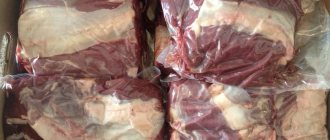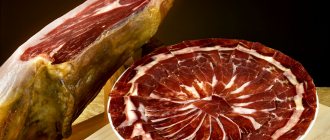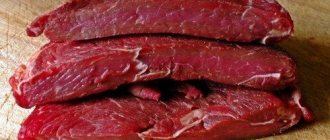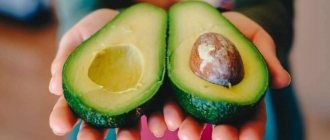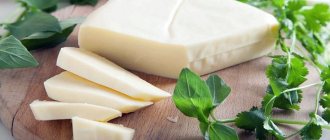Every housewife thinks about how to preserve food for as long as possible without spoiling or losing its beneficial properties.
Vacuum food storage comes to the rescue. The word “vacuum” itself is translated from Latin as “emptiness”. In other words, vacuuming creates a space in which there is no air. When it comes to food, oxygen is removed from special bags or containers. The absence of oxygen prevents the process of harmful oxidation reactions and the formation of bacteria and fungi.
That is, the absence of air leads to the absence of factors that affect and spoil products. Thus, pumping out air from the place where food is stored helps prevent spoilage and keep it fresh and healthy for as long as possible.
PA/PE and OPA/PE
(polyamide/high density polyethylene and oriented polyamide)
Thickness 15-20 microns + 2-3 microns of adhesive (gluing layer) + PE. This is a mid-barrier barrier layer.
Good barrier to oxygen and most gases. Packaging: frozen products (fish, meat, semi-finished products, vegetables, fruits, etc.) with longer storage, gourmet products (cuts and whole pieces), banknotes in banks, medical devices and drugs. When packaging frozen and refrigerated products, the shelf life is up to 30 days*.
General information
To vacuum food at home, you can use a vacuum container or a special device - a household vacuum sealer. What are the advantages of vacuum food storage?
The main ones include:
- Keeping food fresh for a long time, in some cases, even without storing it in the refrigerator;
- Isolation from foreign odors present in storage areas;
- Preservation of beneficial properties;
- Save space in the refrigerator and freezer.
In addition to the obvious advantages, this process allows you to significantly save money. Since it is possible to preserve vegetables and fruits purchased in the summer in this way and use them in food during the cold season, their price in stores and markets is much higher.
Applications and consumption segments
- HoReCa (canteens, cafes, restaurants, fast food, pit stop)
Preparation and storage of semi-finished products, long-term refrigerated storage, transportation to the point of sale.
- Manufacturing plants
Packaging of frozen semi-finished products (berries, vegetables, wild plants), packaging of cheeses, delicacies, salads, sale of chilled products.
Culinary shop (preparation of pickled, snack products) Packing of ready-to-eat dishes after heating, boiled vegetables, snacks.
- Trading companies
Packaging of sweets, semi-finished products, cheeses, frozen products, transportation to the point of sale.
- Stores of manufactured goods and building materials
Packaging of small spare parts, transportation.
Types of packaging
Due to the fact that more and more housewives are beginning to store food in this way at home, manufacturers offer a large selection of special vacuum packaging: containers and bags of various shapes, sizes and even colors. All of them are sold complete with a pump, which is necessary to remove all the air from the package. On some models, the pump may be built into the lid.
- Vacuum storage containers are the most popular . They are made of plastic or heat-resistant glass, which allows them to be used in the microwave, for example, when defrosting stored meat. Additionally, some models are equipped with a built-in calendar that allows you to set the storage start date. You can buy such containers at most supermarkets or specialty kitchenware stores. They are not cheap, especially those made from high-quality materials, but their price is fully compensated by the advantages.
- You can also quite often find vacuum bags for storing food . They can be either disposable, requiring the use of a vacuum sealer, or reusable with a special valve to remove air.
Classification of heat treatment of meat
Each type of heat treatment of meat has its own characteristics.
For example, it is considered paired within one and a half hours after the slaughter of the animal. It has a natural temperature and cools down over time. Due to the fact that the muscles are still very tense, it is quite rigid. In order for them to relax and the meat to acquire the necessary softness, you should wait several days. Chilled is the one that, after cutting the carcass, is put into the refrigerator and cools down there. The top is covered with a natural crust. The temperature of chilled meat does not exceed +4 degrees.
Frozen meat is different in that only the outer part is frozen; the inside remains unfrozen.
And in order for the meat to be stored longer and not spoil, withstanding long transportation, deep freezing is used.
Vacuum Technology
The vacuum sealing process, which can be compared to cold preservation, consists of the following steps:
- The product is placed in a special package. When vacuum sealing foods with a high moisture content, they are pre-cooled.
- Using special equipment, air is removed from the packaging.
- Sealing is carried out with a hermetically sealed seam using heat sealing.
For vacuum sealing, bags made of several layers of polymer films with high barrier characteristics are used, ensuring reliable storage of goods. They are characterized by:
- three-way secure seams;
- notches - for easy opening;
- convenient design.
Depending on the nature of the contents, choose models with a Zip-Lock, with Euro-suspension perforations, and doypacks, which are flexible packaging with a bottom.
What foods can be stored in a vacuum?
The list of such products is quite large. You can store meat, vegetables, cheeses, ready-made meals and then liquids in them.
It is worth considering the storage features of each of them:
- Raw meat and fish . It is advisable to pre-cool or freeze them for a few hours before packing them. This will help in retaining juice and shape. The shelf life of raw fish can thus increase from 3 to 9-10 days. If meat or fish is stored in a vacuum bag in the freezer, it can remain fresh for months or even a year.
ATTENTION! When placed in a vacuum, beef may brown due to lack of oxygen. But this does not mean that the meat has spoiled.
- Vegetables. Before putting them in a vacuum bag or container, preliminary short-term treatment with boiling water is required. This procedure is called blanching and allows you to preserve the smell, color and taste of products. Leafy vegetables and legumes require processing for 1-2 minutes, carrots - 5 minutes in boiling water, cereal plants - 10 minutes. After this, the vegetables must be cooled and dried, only then placed in a bag or container. The shelf life of vegetables in this form increases from 4-5 days to 3 weeks.
Besides the obvious solids, liquids can also be stored using special vacuum lids. In this way, you can extend the life of juices, compotes or vinegar.
- You can also store cooked foods , such as soups, cereals or casseroles. Their shelf life in a vacuum container increases significantly compared to conventional storage and reaches up to 2 weeks.
- bread is stored this way to enjoy its freshness for as long as possible. Using a vacuum bag allows you to preserve baked goods for 7-10 days.
Reviews about vacuum food storage are only positive. This is due to the fact that this method has a very large number of positive aspects. The negative thing is, perhaps, not the cheap price.
How to preserve meat for a long time
There are ways in which you can preserve meat without refrigeration for a long time, but you will have to use complex processing, which will also affect the taste of the product.
Salicylic acid
Prepare the meat by removing it from the bone. Then rinse and drain. Make a solution in the following proportions: 1 teaspoon of salicylic acid per 0.5 liter of water. Take a piece of cloth that should match the size of the meat and soak it in the prepared solution. Then wrap the meat and place it in an enamel container with a good seal. If you store the product in a dark, cool place, then its freshness can reach two weeks.
Salt
With this component, meat can be preserved for up to 80 days. In this case, you can choose one of several options:
- Brine. Pour 0.5 liters of water into a container and add 10 tbsp. l. salt. Cut the meat into pieces of 300–400 g and place in a container with liquid for a day. Place the salted fillets in glass jars and fill with the same mixture. Close the lid tightly and store in a dark place.
- Dry. Divide the meat into flat pieces and soak it in salt. Lay out in one layer and repeat the procedure, covering all sides. If the fillet will later be used to make goulash, soup or gravy, you can add seasoning.
Salted meat will retain its properties for up to three months. Before use, the fillet should be washed and placed in a container with clean water for 2-3 hours. The more often you change the fluid, the more salt will come out.
Drying
There are many options for drying meat:
- Oven. Cut the meat into steaks and place on a baking sheet so that they do not touch each other. Place in the oven and set the temperature to minimum. The meat takes about 8–10 hours to dry, and the oven door should always be open.
- Bonfire. Under natural conditions, a fire will be an effective tool for drying meat. Light a lot of wood and let it burn until hot. Then hang the pieces of meat over the fire so that they do not fry. It is also recommended to make a small hut from green branches in the form of a roof. The drying process is labor intensive as you will have to maintain the same heat temperature for 7-8 hours.
- Sun. Cut the fillets into thin pieces and hang them in the sun. The main thing here is to prevent access of insects, otherwise the meat will quickly disappear. It is recommended to use a frame and mosquito net.
As an alternative, you can dry the minced meat. Grind the fillet, add salt, and place in a thin layer on a saucer or baking sheet. After the top layer is covered with a crust, turn the minced meat over so that the entire mass dries evenly.
Conservation
This type is considered the most effective, since the meat can be stored for up to three years. In a confined space, the fillet is saturated with its own fumes, while being protected from parasites.
Drying
Before you start drying the meat, separate it from the fat and cut it into thin pieces. Then hang it on a thread and place it in the sun. Beware of interaction with insects, use a net or gauze. Fillet can also be dried in an apartment, as long as there is a ventilated place.
The meat is dried for 4 to 14 days, depending on the type of animal. Before you hang the pieces, you can pre-season them to your liking.
"Hot" preservation
Cut the meat into small pieces and place in a container with water. Add salt, spices and cook until it begins to break down into small fibers. Pour boiling water over glass jars and place the cooked meat in them, tamping lightly. Add broth, roll up and cover with a blanket to prevent a sudden drop in temperature.
Cold preservation
Cut the raw meat into small pieces and put it in a jar, first sprinkling it with salt. Roll up the container and sterilize for at least 1 hour.
Jamon
To prepare the Spanish dish, you will need to be patient as the process is quite long and labor intensive. If you follow tradition, you will need pork ham, but you can use any meat, as long as you follow the appropriate rules. Cover the ham with granular salt and leave to saturate for 20–24 hours at a temperature of 0 to -5 degrees, the main compartment of the refrigerator will do. After the set time has passed, remove the meat and rinse thoroughly with clean water. Then hang it up and let it drain for 48 hours.
Return the ham to the refrigerator for 30 to 40 days, then hang upright to dry. This period is the most difficult because you will need a room where you can regulate the temperature. For 90 days, once a week you will need to increase the temperature by exactly 1 degree.
In the final process, hang the ham in a basement with a temperature of 8–12 degrees and keep for at least 1 year. The maximum shelf life reaches 3 years, but there is a risk of spoilage. Cut the finished meat into thin layers.
Storage in an ice cellar
This method originated in the distant past, when there were no refrigerators yet. In winter or spring, people went to lakes or rivers and chiseled ice. Then the large blocks were crushed into small pieces and covered half the cellar with them.
Meat in any form was placed on top or between frozen pieces of ice. In this case, all air supply openings were blocked, unless it was winter time. In this way, the meat could be preserved until the summer, since the air temperature practically did not rise, and accordingly the ice melted slowly.
How to preserve meat while camping
In warm climates, meat spoils quickly, so if you take it on a hike, then apply the following recommendations:
- If there is a lake or river near your shelter, then they can be used as a refrigerator. Take some plastic bags and place the meat in them. Check them first for holes, as any water that gets in will quickly be absorbed into the meat. Then tie the bags tightly and lower them into the water. For fastening, use any wooden stake or pin. Once you remove the meat from the water, you should use it immediately as it will disappear quickly.
- No matter how hot it is, the ground is always cool and damp. Dig a hole with any available items, but the depth should not be less than 20 cm. Use plastic bags or cans as containers. Place the product in the hole and bury it.
- Find nettle or bird cherry leaves, wrap them around the meat and throw on a wet towel. This will keep it for up to 6-8 hours.
It is best to dry or salt meat in nature, since it will surely last at least a day without absorbing foreign odors. Burying it in the ground or storing it in water will only preserve it for 3-4 hours, and the aroma may change.
How to extend the shelf life of vacuum-packed foods
Vacuum sealing itself is an excellent universal means of extending the shelf life of food. But in order for product quality to be maintained for a long time, it is important to adhere to certain rules. To extend the shelf life of vacuum-packed products, you must:
- Avoid sharing products that can damage the packaging;
- store products avoiding moisture;
- prevent changes and sudden changes in temperature;
- Avoid sun exposure to the packaging;
- follow the basic storage rules indicated on the package.
The most destructive factor is damage. The vacuum bag is strong enough to withstand mechanical stress, but it is not always possible to completely prevent damage.
Vacuum sealing today is one of the most popular, versatile and effective ways to preserve food of almost any type. At the same time, buying vacuum bags wholesale or retail is not difficult. They are cheap to purchase and use in everyday life and on an industrial scale. And to extend the shelf life of products in vacuum packaging, it is enough to follow simple rules and recommendations.
How to preserve meat in the forest while hunting
Professional hunters more often use salting, drying or smoking, but for this you need to have the appropriate skills and have the necessary components with you. But there are also simpler, but less effective ways. Killed small game is hung on a belt. Interaction with wind increases shelf life. It is recommended to immediately gut any game and stuff it with bird cherry or nettle leaves. They will not block the flow of air and protect the meat from insects.
Carcasses of large animals must be gutted and bled immediately, otherwise the meat will spoil in the next 5–7 hours. The best option is to cut into pieces and hang. Create a frame of branches and cover it with mesh or gauze so that insects cannot penetrate there. Meat in this form can last up to three days, since it is protected from parasites and regularly ventilated.
